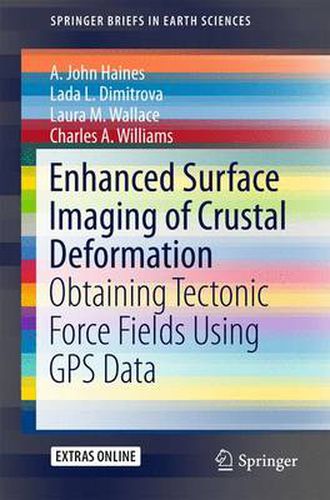Readings Newsletter
Become a Readings Member to make your shopping experience even easier.
Sign in or sign up for free!
You’re not far away from qualifying for FREE standard shipping within Australia
You’ve qualified for FREE standard shipping within Australia
The cart is loading…






This book takes an in depth look at a novel methodology for analyzing Global Positioning System (GPS) data to obtain the highest possible resolution surface imaging of tectonic deformation sources without prescribing the nature of either the sources or the subsurface medium. GPS methods are widely used to track the surface expression of crustal deformation at tectonic plate boundaries, and are typically expressed in terms of velocity fields or strain rate fields. Vertical derivatives of horizontal stress (VDoHS) rates at the Earth’s surface can also be derived from GPS velocities, and VDoHS rates provide much higher resolution information about subsurface deformation sources than velocities or strain rates. In particular, VDoHS rates allow for high precision estimates of fault dips, slip rates and locking depths, as well as objective characterization of previously unknown (or hidden) tectonic deformation zones.
$9.00 standard shipping within Australia
FREE standard shipping within Australia for orders over $100.00
Express & International shipping calculated at checkout
This book takes an in depth look at a novel methodology for analyzing Global Positioning System (GPS) data to obtain the highest possible resolution surface imaging of tectonic deformation sources without prescribing the nature of either the sources or the subsurface medium. GPS methods are widely used to track the surface expression of crustal deformation at tectonic plate boundaries, and are typically expressed in terms of velocity fields or strain rate fields. Vertical derivatives of horizontal stress (VDoHS) rates at the Earth’s surface can also be derived from GPS velocities, and VDoHS rates provide much higher resolution information about subsurface deformation sources than velocities or strain rates. In particular, VDoHS rates allow for high precision estimates of fault dips, slip rates and locking depths, as well as objective characterization of previously unknown (or hidden) tectonic deformation zones.